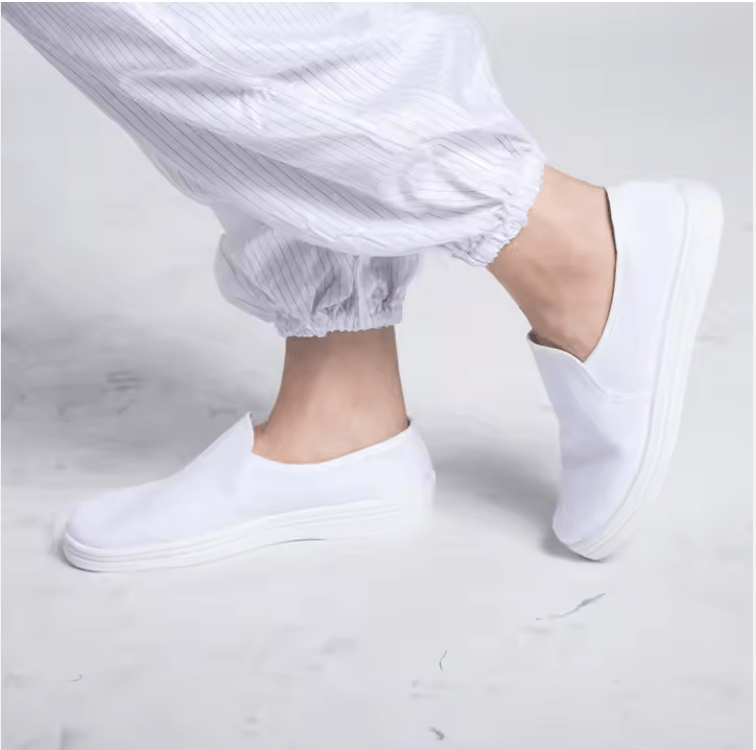
Features Of Clean Room Shoe:
1. Washable, excellent ESD performance with resistance 10e6 ~10e9 Ohm
2. Efficiently prevent dust generating
3.Static-dissipative inner soles and bottom soles can provide continuous electric contact of the foot to ground as required by ESD standards.
Usage Notes Of Clean Room Shoe :
1. Be worn on ESD floor.
2. Don’t wear insulated wool socks or insoles.
3. Don’t stick any insulation material to the sole.
4. Test ESD properties of shoes every week, and clean it or change it according the results.
Maintenance Notes Of Clean Room Shoe:
1. Be cleaned with warm water (below 40°C) and soft brush.
2. Washed with neutral detergent.
3. Dry in the ventilation, cool place, and avoid direct sunlight.
4. Keep shoes in cool place and infilling with soft cloth or paper.
Product Name | Clean Room Shoe |
Size | 34#-43#(220mm-265mm) |
Upper Material | Canvas |
Insole Material | 5mm esd fabric |
Sole Material | PVC |
Feature | * Ligt weight and comfortable, soft, Highly Breathable |
Type | Full Canvas |
Applications | Be Applicable to personal ESD protection in the electronic production process |
Choosing the right Electrostatic Dissipative (ESD) shoes is important for safety, especially in electronics, cleanrooms, and explosive environments. Here's a simple guide to help you choose the right pair:
1. Understand What ESD Shoes Do
They dissipate static electricity from your body safely to the ground.
Prevent static discharge that could damage sensitive electronic components or cause explosions.
2. Check for ESD Compliance
Look for shoes labeled with:
ANSI/ESD STM9.1
ASTM F2413 (U.S.)
IEC 61340-5-1 (international)
The resistance range should be:
1 × 10⁶ Ω to 1 × 10⁹ Ω
This range ensures they're not too conductive (like anti-static shoes) and not insulating (like regular shoes).
3. Match the Use Case
Environment
Recommended ESD Shoe Features
Electronics Assembly | Lightweight, breathable, low-voltage discharge |
Cleanrooms | Low-particulate materials, easy to sanitize |
Chemical/Explosive Areas | ESD + Slip-resistant + Oil/acid resistant |
Industrial/Heavy Duty | ESD + Composite/Steel Toe + Puncture-resistant |
4. Choose the Right Style
Shoe, Boot, or Clog depending on safety and comfort
Slip-on or Lace-up depending on workplace policy
Composite Toe for lighter, metal-free safety
Steel Toe for max impact protection
5. Comfort and Fit Matter
Choose breathable, cushioned insoles for all-day wear
Make sure they fit snugly to maintain proper ESD contact with your foot
Some require ESD socks for better conductivity
6. Maintenance & Testing
ESD shoes should be tested regularly with ESD testers
Replace them if the resistance is out of range or if the soles are damaged
Delivery is prompt!
By 10-year industry experts!
Diverse payment methods available!
Unbeatable cost performance!